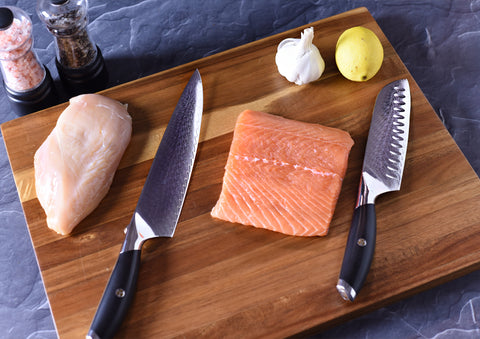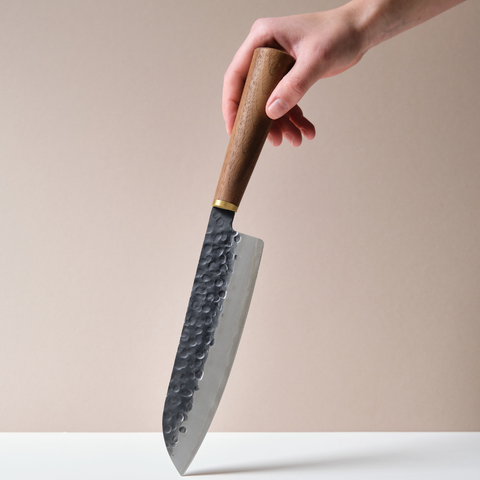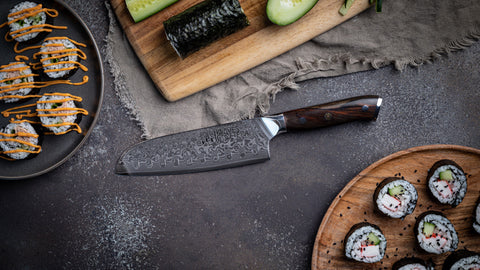As professional kitchen enthusiasts, knowing how to use a Santoku style pairing knife can make a tremendous difference in your culinary activities. This versatile kitchen tool has become a favorite among chefs for its multi-purpose capabilities.

What Is a Santoku Style Pairing Knife?
A Santoku knife is a general-purpose kitchen knife originating in Japan. The word ‘Santoku’ means ‘three virtues’ and refers to the knife’s ability to perform three essential culinary tasks: slicing, dicing, and mincing. When combined with the finer, smaller size of a pairing knife, you get the perfect tool for intricate and delicate kitchen tasks.

Why Use a Santoku Style Pairing Knife?
You’ll be delighted to discover that this knife offers a tremendous balance between functionality and ease of use. Its shorter blade makes it ideal for precision cuts, while the flat edge ensures efficient and smooth handling. Whether you’re peeling fruits or making intricate garnishes, this knife is your go-to tool.

Choosing the Right Santoku Style Pairing Knife
Consider the Material
The material of the blade plays a crucial role. High-carbon stainless steel is a preferred choice for many professionals due to its durability and resistance to rust.
Blade Length
Generally, a Santoku style pairing knife has a blade length of about 3 to 5 inches, suitable for precision work.
Handle Comfort
Ensure that the handle feels comfortable and secure in your hand, as this will affect your precision and control.

How to Properly Hold a Santoku Style Pairing Knife
Holding the knife correctly is paramount for precision and safety. Grip the handle firmly while resting your index finger along the spine of the blade. Your grip should be relaxed but controlled, allowing you to maneuver the knife with ease.
Using the Santoku Style Pairing Knife for Different Tasks
Peeling Fruits and Vegetables
This knife is perfect for peeling due to its smaller size. Hold the fruit or vegetable in one hand and gently guide the blade to remove the skin without taking too much of the flesh.
Making Garnishes
The precision offered by this knife allows you to create intricate and beautiful garnishes, elevating your presentation skills to a professional level.
Slicing and Dicing
Despite its smaller size, the Santoku pairing knife is excellent for slicing small ingredients like garlic, chilies, and herbs with precision.
Maintaining Your Santoku Style Pairing Knife
Regular Sharpening
Sharpen knife regularly to maintain its cutting efficiency. Using a whetstone or honing rod can be particularly effective.
Proper Cleaning
Always hand wash your knife with mild soap and water. Avoid using a dishwasher as it can damage the blade.
Safe Storage
Store your knife in a knife block or on a magnetic strip to protect the blade.
Advanced Techniques for Using a Santoku Style Pairing Knife
Julienning Vegetables
This technique involves cutting vegetables into thin, uniform matchsticks. It’s an advanced skill that requires practice, but a Santoku pairing knife makes it more manageable.
Supreme Citrus Fruits
Segmentation of citrus fruits can be challenging, but this knife’s precision is perfect for removing the segments cleanly.
Butterfly Cutting
Butterflying meat or seafood often requires intricate cuts that are easier to achieve with the shorter blade of a Santoku style pairing knife.
Conclusion
Knowing how to use a Santoku style pairing knife can undoubtedly elevate your culinary skills. This knife offers a tremendous blend of functionality and precision, making it a must-have in any kitchen.
Frequently Asked Questions
Is the Santoku style pairing knife better than a regular pairing knife?
It depends on your specific needs. The Santoku style offers versatility and precision, which can be advantageous for various tasks.
What is the best way to sharpen a Santoku style pairing knife?
Using a whetstone is generally recommended for sharpening, as it offers a fine edge while maintaining the blade’s integrity. For more tips on sharpening, visit this guide to sharpening kitchen knives.
Can I use a Santoku style pairing knife for meat?
Yes, but it is most effective for smaller, intricate cuts rather than larger tasks that require a heavier knife.
As an Amazon Associate, I earn from qualifying purchases.
As an Amazon Associate, I earn from qualifying purchases.


